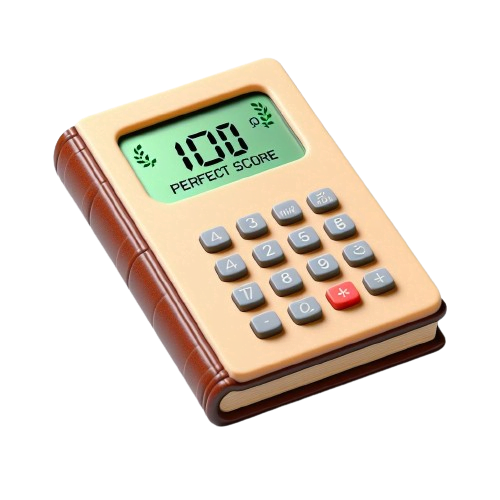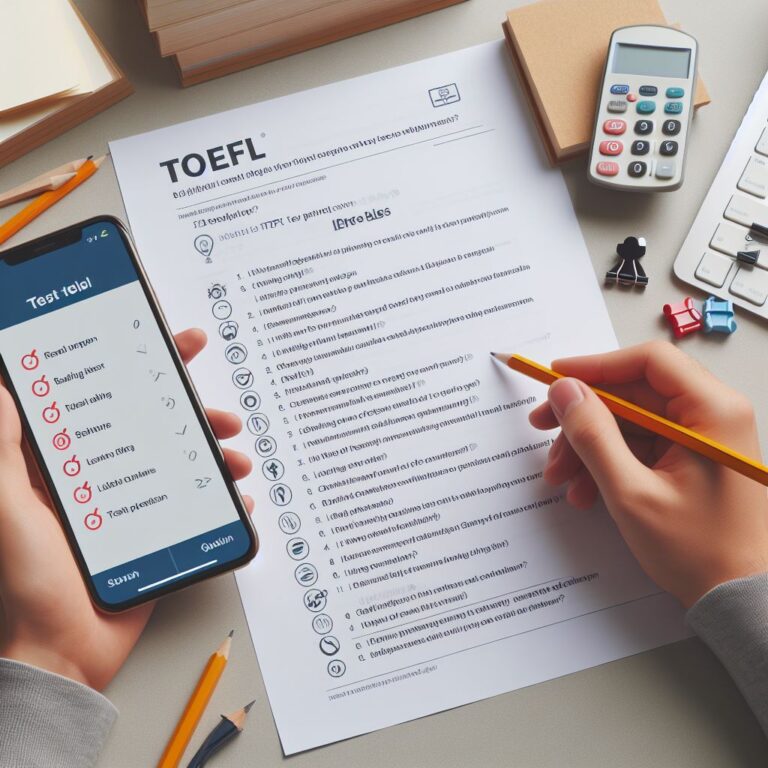How to Calculate TOEFL Reading Score: TOEFL Reading Score Calculator (2024)

Key Takeaways:
The scores for the reading section are calculated based on the number of correct answers you give at the exam. The raw score is then converted into a scaled score using the formula: Scaled Score= (Raw Score/33)*30
What you will find in this guide:
TOEFL Reading Score
The TOEFL (Test of English as a Foreign Language) is a standardized test that measures your ability to use and understand English at the university level. It’s used by many institutions to make admissions decisions1. The reading section of the TOEFL plays a crucial role in the overall score, as it tests your ability to read and understand academic texts, which is a necessary skill for success in an English-speaking university1.
TOEFL reading score is calculated by a computer and the score ranges from 0 – 30. The TOEFL reading section has 30 questions based on reading passages from texts and answering questions. The candidates get 37 minutes to answer the questions.
The TOEFL reading score scale range from 0 – 30. This TOEFL reading grading scale is determined by your raw score. In this section, you can earn 1-3 TOEFL reading points per question. There are no penalties for incorrect answers.
Depending on how many questions you get right determines the point scale for your particular TOEFL test, these will mark your maximum raw score. Generally, the maximum raw score is 33 points but this can be less depending on the number of questions you right.

What is a Good Reading Score?
A good TOEFL iBT reading score is subjective and depends on the requirements of the specific university or college you’re applying to12. Each institution sets its own standards for TOEFL scores, so it’s important to research the specific score requirements of your desired universities12.
The TOEFL iBT Reading section is scored on a scale from 0 to 303. The score you receive reflects your English reading proficiency. The proficiency levels associated with score ranges are as follows3:
- Advanced: 24–30
- High-Intermediate: 18–23
- Low-Intermediate: 4–17
- Below Low-Intermediate: 0–3
Many prestigious colleges often require a student to be at least between the intermediate to high-level TOEFL score range4. This means that these institutions typically look for scores in the range of 18 to 304. However, the highly competitive and prestigious universities often require a 100 or higher total score on the TOEFL, which would mean scoring high in all four sections of the test, including reading1.
It’s important to note that while a higher score can improve your chances of admission, a lower score doesn’t necessarily exclude you from consideration. Some institutions may offer conditional admission to students who fall slightly short of the score requirement1.
Understanding Your TOEFL Reading Score
In the TOEFL iBT test, each of the four sections (Reading, Listening, Speaking, and Writing) is scored on a scale from 0 to 30, making the total score range from 0 to 120.
Let’s focus on the Reading section. Here’s how it works:
Raw Score: This is simply the number of questions you answer correctly in the Reading section. The TOEFL iBT Reading section contains 20 questions, so your raw score will be somewhere between 0 (if you don’t answer any questions correctly) and 33 (if you answer all questions correctly).
Scaled Score: The raw score is then converted into a scaled score, which ranges from 0 to 30. The conversion process takes into account the difficulty level of the questions. This means that answering difficult questions correctly could potentially lead to a higher scaled score. 3
Score Report: Your score report will only show your scaled score. This is the score that universities will see when you submit your TOEFL scores as part of your application.
Understanding this scoring system can help you interpret your scores and identify areas where you need to improve. For example, if your scaled score in the Reading section is lower than you expected given the number of questions you answered correctly, it might mean that you need to work on answering more difficult questions correctly.
TOEFL Reading Score Calculation Formula
TOEFL Reading Score Calculator
The TOEFL reading raw score conversion process to get the scaled score or adjusted score from a raw score is a bit complicated. In case you do not want to go through the 3-step score conversion process, you can take the help of the TOEFL reading score calculator. Here, you just have to put the raw score and the calculated scaled score will come out.
This chart shows the conversion of raw points to scaled scores for a reading comprehension test. It provides a clear breakdown of how raw points are translated into scaled scores, which can be crucial for understanding test results.
| Raw Point Total | Scaled Score |
|---|---|
| 32–33 | 30 |
| 31 | 29–30 |
| 30 | 28–29 |
| 29 | 27–28 |
| 28 | 26–27 |
| 27 | 25–26 |
| 26 | 24–25 |
| 25 | 23–24 |
| 24 | 22–23 |
| 23 | 21–22 |
| 22 | 20–21 |
| 21 | 19–20 |
| 20 | 18–19 |
| 19 | 17–18 |
| 18 | 16–17 |
| 17 | 15–16 |
| 16 | 14–15 |
| 15 | 13–14 |
| 14 | 12–13 |
| 13 | 11–12 |
| 12 | 10–11 |
| 11 | 9–10 |
| 10 | 8–9 |
| 9 | 7–8 |
| 8 | 6–7 |
| 7 | 5 |
| 6 | 4 |
| 5 | 3 |
| 4 | 2 |
| 3 or below | 0 |







